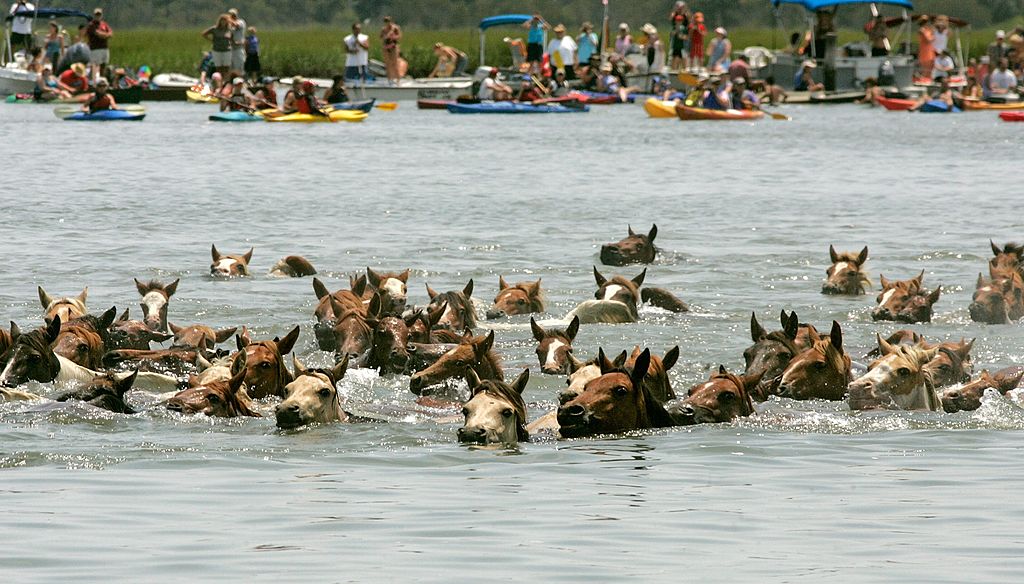A "secondary payer" insurance policy requires YOU to pay for services up front, later submitting receipts and descriptions of services/treatments (in English!) to the insurance company. After the secondary payer determines what, if anything, your other, at-home insurance company will pay, only then will they reimburse you for the balance.
Wednesday, July 22, 2020
Betty James Travel Insurance Strategy
Rick Steves: Foraging Europe’s markets for the perfect picnic

Although we've had to postpone trips to Europe due to the pandemic, I believe a weekly dose of travel dreaming can be good medicine. Here's one of my favorite European activities -- a tasty reminder of what's waiting for you at the other end of this crisis.
As a budget traveler, there's no better experience than a picnic sourced from a local market and then eaten outdoors with a lively square, peaceful park, or rejuvenated harborfront as a backdrop. Picnicking is simply the best way to enjoy Europe's edible specialties economically. I've become a picnic connoisseur -- and markets are at the heart of my picnic plans.
To me, the marketplaces of Europe are as important as the museums. They're local life on display, and the energy is palpable. Purveyors shout their daily specials -- cheeses, meats, fresh produce, and warm-from-the-oven bread -- while shoppers zigzag from stand to stand. Nearly every town has a market, and I make it a point to be there for the action. Of all Europe's markets, three in particular -- from trendy to thrifty -- really whet my appetite.
Barcelona, Spain, dazzles hungry travelers with its grand covered market, La Boqueria. Just off the city's busy, touristy boulevard, Las Ramblas, La Boqueria is an explosion of chicken legs, stiff fish, colorful fruits, and odd odors. Since as far back as 1200, Barcelonans have bought their animal parts and fresh produce here.
Today, the market is a social affair and a feast for the senses. Wander around -- as local architect Antoni Gaud' used to -- and gain inspiration. Beyond meats and produce, the focus here is on Spanish specialties: from olives, mushrooms, and artichokes to heartier iberico (Iberian) ham and Catalan botifarra sausage. Scavenge this slice of Catalan culture for a picnic that challenges your palate. Head to the booths farther in or along the sides for a bigger bang for your euro. If you don't know the language, just point to what you want and write the amount on a scrap of paper, or type it into your smartphone's notepad or translation app. Then head to Barceloneta beach and feast with your feet in the sand.
Across the continent in Poland, the city of Kraków offers a deep dive into the authentic, untouristed market culture at the Stary Kleparz market, just steps from the city's Royal Way. It's just lots of hardscrabble people selling what they grow, bake, and knit, while shoppers bustle around, stocking up for the week.
Search out the freshest doughnuts (paczki), the most popular bakery, the smelliest smoked-fish stand, and the old man with the smoked cheese. Buy sunflower seeds the way locals do -- by the flower, with the seeds still nestled in their pod. The picnic-perfect Polish specialty you'll find everywhere around Kraków is the beloved zapiekanka -- a toasted baguette with cheese, ketchup, and a bewildering array of toppings. Grab one to accompany your market snacks while you stroll the Royal Way.
The mother of all food markets is London's Borough Market. The city's oldest fruit-and-vegetable market, it's been serving the Southwark community for more than 800 years. Though tourists overwhelm the place, it still has a fun carnival atmosphere and endless, enticing food stalls. This is my favorite market for cobbling together a picnic with both local and international flair. There's everything from diver-farmed oysters (boasting they're straight "from boat to Borough") and venison burgers to glistening chutneys and delicacies from Croatia and Calabria...and more than a few cheesemongers.
Bustling markets like these make picnicking an engaging cultural experience. Make an effort to communicate with the merchants and know what you're buying -- and how much you're spending. You'll probably need to hit several stalls to put together a complete meal. And take the opportunity to try something unfamiliar.
I always incorporate a picnic brunch, lunch, or dinner into my sightseeing plans. I might start the day by scouring the market with my senses, then filling up my shopping bag and having breakfast on a riverbank. Markets typically close in the early afternoon, so it's smart to stock up in the morning.
For an evening picnic, I find a spot on a castle wall to enjoy a commanding view and the setting sun. Some of my all-time best picnics have been lazy dinners accompanied by medieval fantasies in the quiet of after-hours Europe. When I'm exploring the Alps, I punctuate my hike with a picnic. Food tastes even better on top of a mountain. And with any luck, a picnic could become a potluck, resulting in new friends and stuffed stomachs.
When travel to Europe resumes, be sure to graze its bounty of local markets -- the experience will not only leave you with a full tummy, but also full of tasty memories.
Rick Steves (www.ricksteves.com) writes European travel guidebooks and hosts travel shows on public television and public radio. Email him at rick@ricksteves.com and follow his blog on Facebook.
(c)2020 Rick Steves
Tuesday, July 14, 2020
Plants that Attract Seed-eating Birds – thanks to Laidback Gardener
PLANTS THAT ATTRACT SEED-EATING BIRDS
StandardYou'll see lots of advice on the Internet about shrubs and trees with colorful berries that attract birds: serviceberries, hollies, crabapples, etc. After all, birds like them and we find them attractive too. But not all bird species are fruit-eaters. In fact, the greatest number are seed-eaters, birds like goldfinches, chickadees, grosbeaks, and nuthatches. Few sites seem to mention the many plants you can grow to attract this group. It's as if you're expected to put up bird feeders for seed-eating birds and be content with that.
I don't use bird feeders, yet I see all sorts of birds (and animals too!) visiting my garden in the winter, most of them seed-eaters, birds that flock to the varied vegetation I provide. You see, I do no fall cleanup and all my perennials, annuals and grasses are left to stand all winter, to the great delight of the seed-eating crowd.
The secret to attracting birds with seed-bearing plants is to provide a lot of variety. Make sure you have a wide range of plants, some maturing in summer or fall, others holding on to their seeds through the winter. This will attract the greatest number of bird species. You'll need herbaceous plants (perennials, annuals, etc.), but also shrubs and trees. About the only kind of backyard environment that seed-eating birds will have nothing to do with is a neatly-kept lawn, so up the flowers and shrubs, and cut back on lawn for the best range of bird visitors.
And don't scorn weeds, either! Many plants considered weeds (thistle, goldenrod, fireweed, etc.) or weed trees, like box elder (Acer negundo), are actually great plants for attracting birds. If you have the space, why not turn a corner of your yard into a wildlife habitat by letting otherwise undesirable plants grow freely? The birds will thank you for it! (As will the butterflies, but that's a different story!)
Some Plants to Try
Here are some plants that seed-eating birds particularly like. They are found in all categories, from annuals to perennials, biennials, vines, shrubs, trees and even conifers. You'll notice that most of these plants are fairly common garden plants: it's just that we rarely think of them as bird fodder. Just leave them along during the winter and watch the birds come in great numbers!
- Abies spp. (fir) zones 1 to 7, depending on the species
- Acer spp. (maple) zones 3 to 8, depending on the species
- Achillea spp. (yarrow) zones 2 to 4, depending on the species
- Alnus spp. (alder) zones 1 to 8, depending on the species
Amaranthus spp. (amaranth, love-lies-bleeding) annual
- Andropogon spp. (bluestem) zone 3
- Aquilegia spp. (columbine) zone 3
- Asclepias spp. (milkweed) zones 3 to 10, depending on the species
- Aster spp. (aster) zones 2 to 6, depending on the species
- Betulus spp. (birch) zones 1 to 5, depending on the species
- Calendula spp. (pot marigold) annual
- Campanula spp. (bellflower) zones 1 to 6, depending on the species
- Carpinus spp. (hackberry) zones 4 to 7, depending on the species
- Centaurea spp. (cornflower) annual or zone 3, depending on the species
- Cerastium spp. (snow-in-summer) zones 2 to 4, depending on the species
- Cirsium spp. (thistle) zones 2-6, depending on the species
Clematis spp. (clematis) zones 2-8, depending on the species
- Coreopsis spp. (coreopsis) annual or zones 3-7, depending on the species
- Cosmos spp. (cosmos) annual
- Delphinium spp. (delphinium, larkspur) zone 3
- Deschampsia caespitosa (tufted hair grass) zone 3
- Echinacea spp. (echinacea, purple coneflower) zone 3
- Echinops spp. (globe thistle) zone 3
- Epilobium angustifolium (fireweed) zone 2
- Erysiumum spp. (wallflower) zone 6
- Eschscholzia spp. (California poppy) annual
- Eupatorium spp. (Joe Pye weed) zone 3
Fraxinus spp. (ash) zones 3 to 7, depending on the species
- Gaillardia spp. (gaillardia, blanket flower) annual or zone 3
- Hamamelis spp. (witchhazel) zones 4 to 8, depending on the species
- Helianthus annuus (sunflower) annual
- Helianthus spp. (perennial sunflower) zones 3-6, depending on the species
- Hesperis matronalis (dame's rocket) Zone 3
- Limonium sinuatum (statice) annual
- Linum spp. (flax) annual or zone 3
Miscanthus spp. (maiden grass) zones 4 to 6, depending on the species
- Nigella damascena (love-in-a-mist) annual
- Oeonothera spp. (evening primrose) zones 3-6, depending on the species
- Onopordum spp. (Scotch thistle) zone 4
- Panicum virgatum (switch grass) zone 3
- Papaver spp. (poppy) annual or zone 3
- Pennisetum spp. (fountain grass, millet) annual or zone 5
- Phlox spp. (phlox) annual or zone 3, depending on the species
Picea spp. (spruce) zones 1 to 7, depending on the species
- Pinus spp. (pine) zones 3 to 9, depending on species
- Portulaca grandiflora (portulaca) annual
- Rudbeckia spp. (coneflower) zone 3
- Rumex spp. (sorrel) zones 3 to 5, depending on the species
- Salvia spp. (sage) annual or zones 3 to 10, depending on the species
- Scabiosa spp. (scabiosa, pincushion flower) annual or zone 3, depending on the species
Sedum spp. (sedum) zones 3 to 10, depending on the species
- Solidago spp. (goldenrod) zone 2
- Sorghastrum nutans (false sorghum) zone 3
- Tagetes spp. (marigold) annual
- Thuja spp. (arborvitae) zones 3 to 6, depending on the species
- Tsuga spp. (hemlock) zones 4 to 6, depending on the species
- Verbascum (mullein) zones 3 to 7, depending on the species
- Vernonia spp. (ironweed) zone 4
- Zinnia spp. (zinnia) annual
- "
Friday, July 3, 2020
Fun Raspberry Pi projects thanks to morning brew!: ☕️ Wrong kind of pie
From: The Essentials <crew@morningbrew.com>
Date: Fri, Jul 3, 2020 at 3:02 PM
| Is the summer box office dead on arrival? |
|














